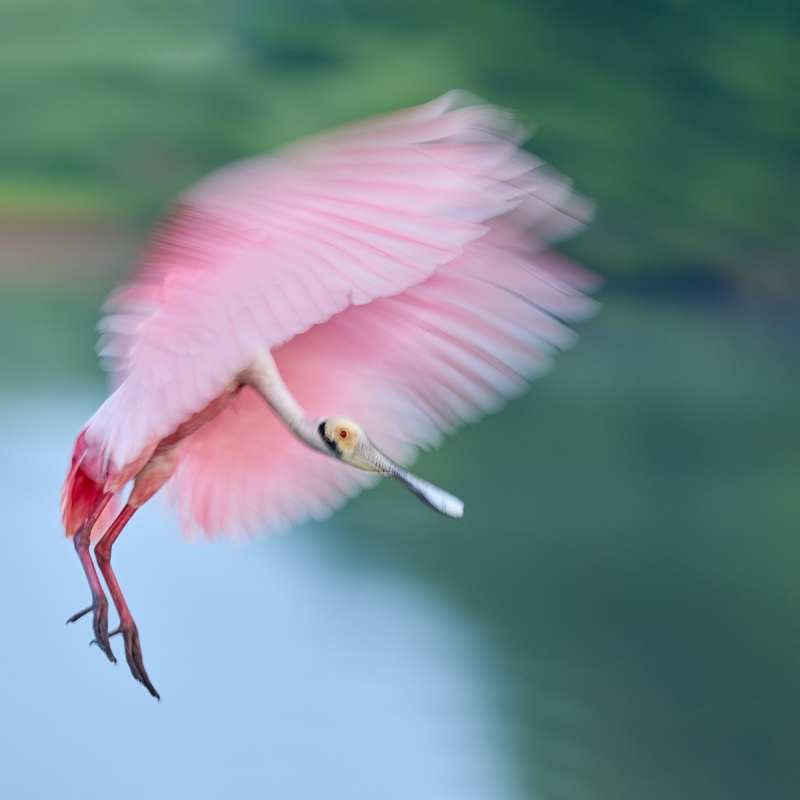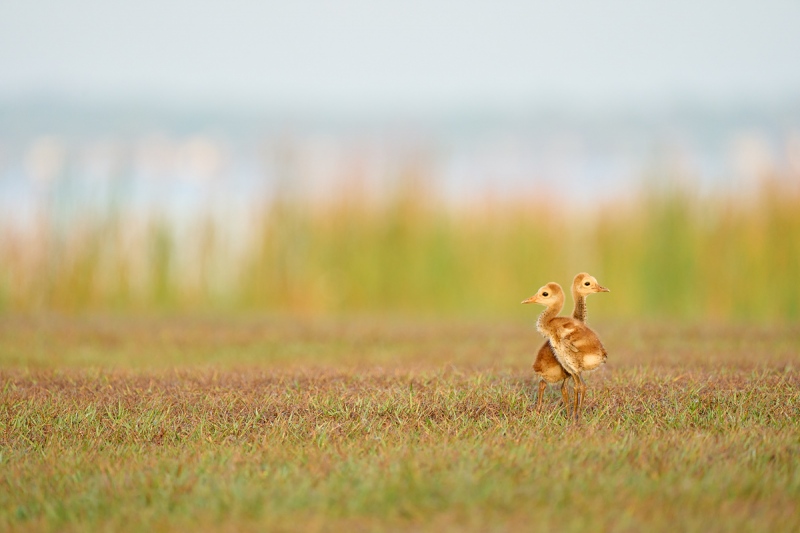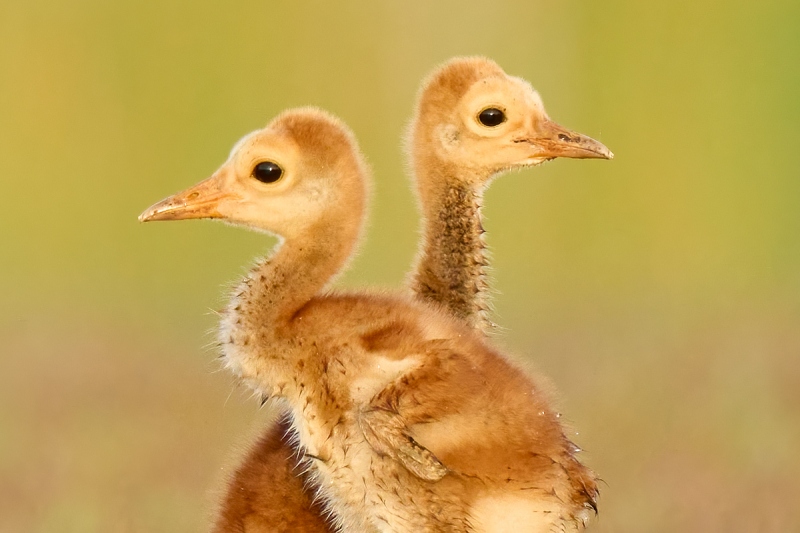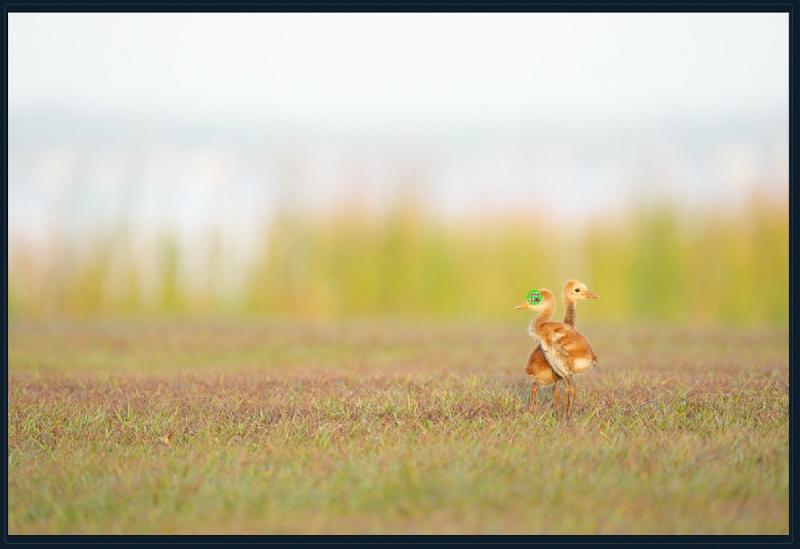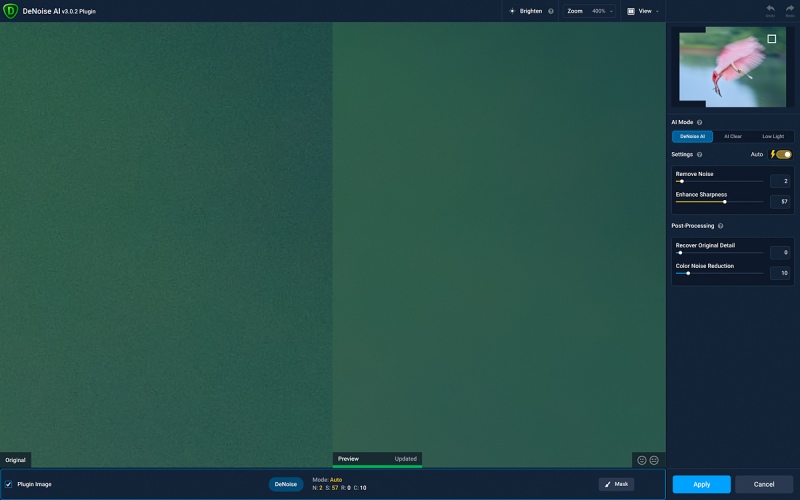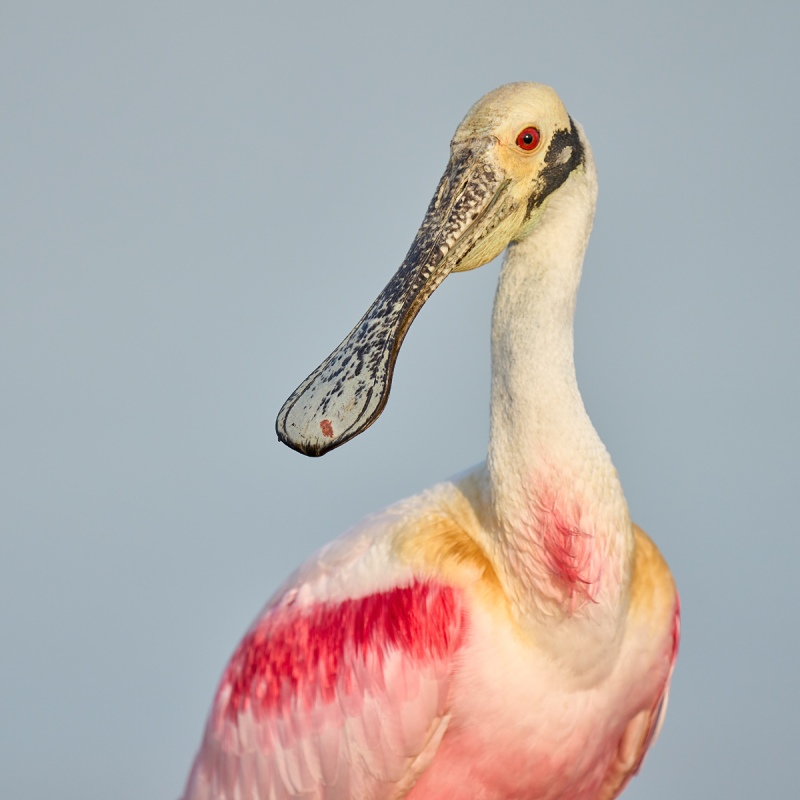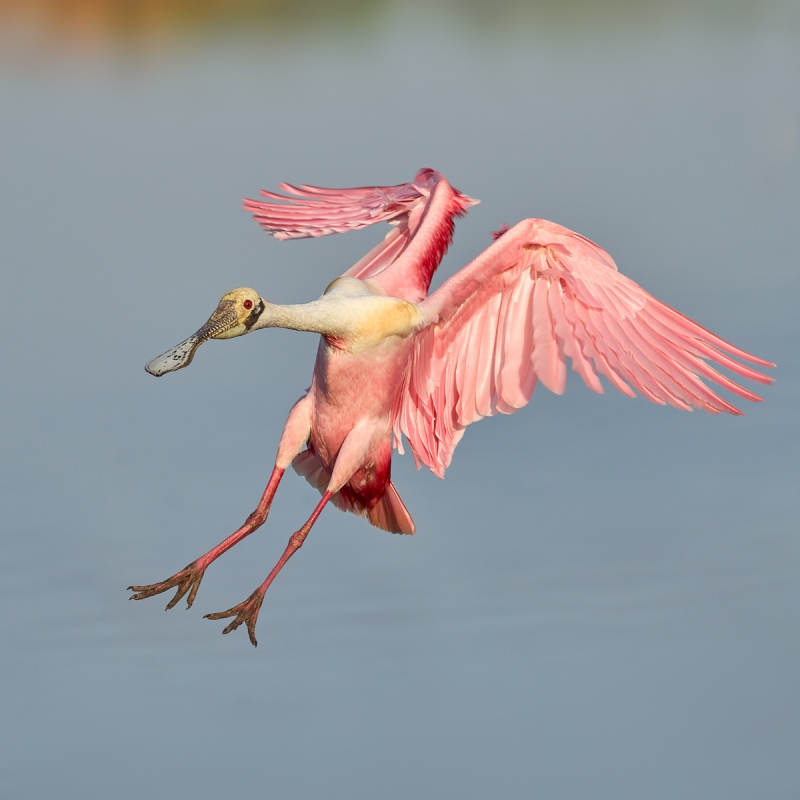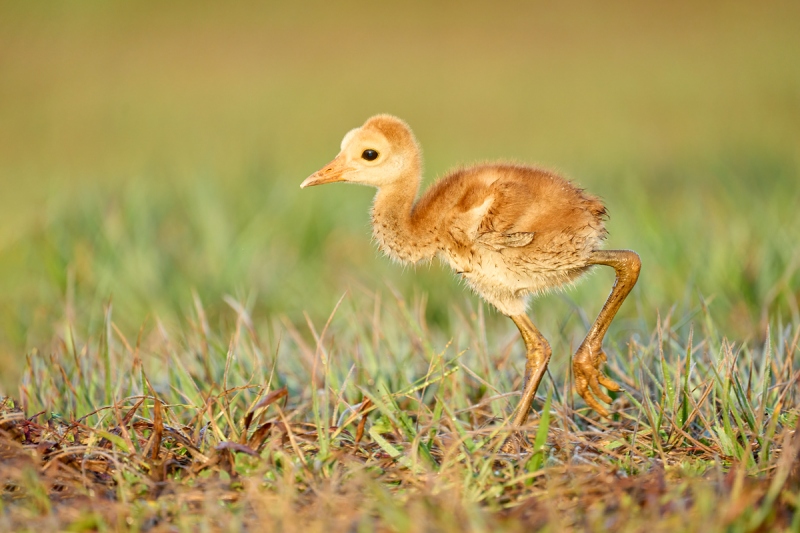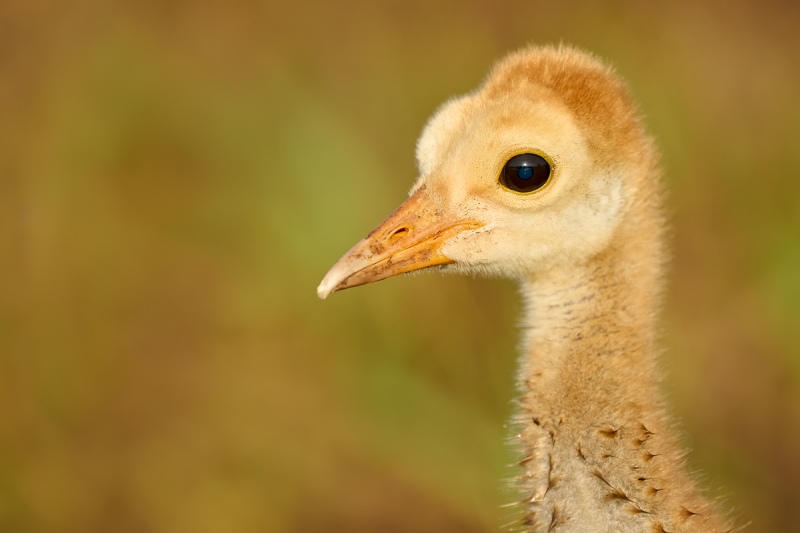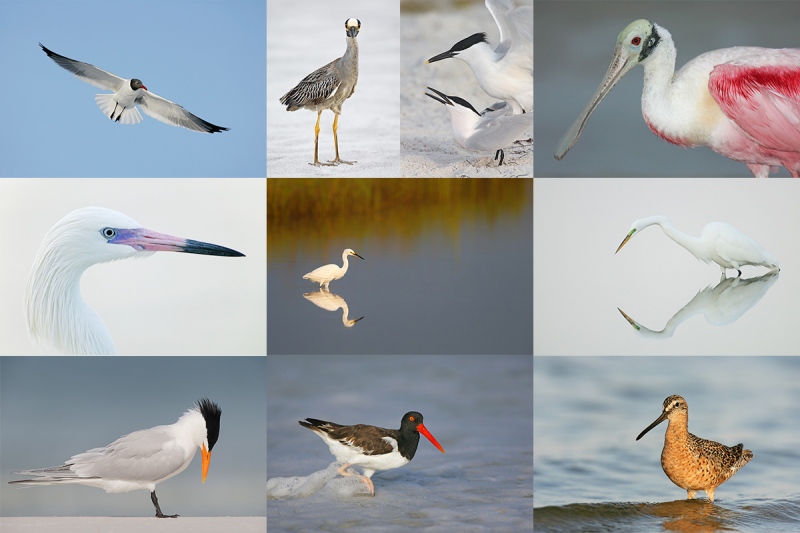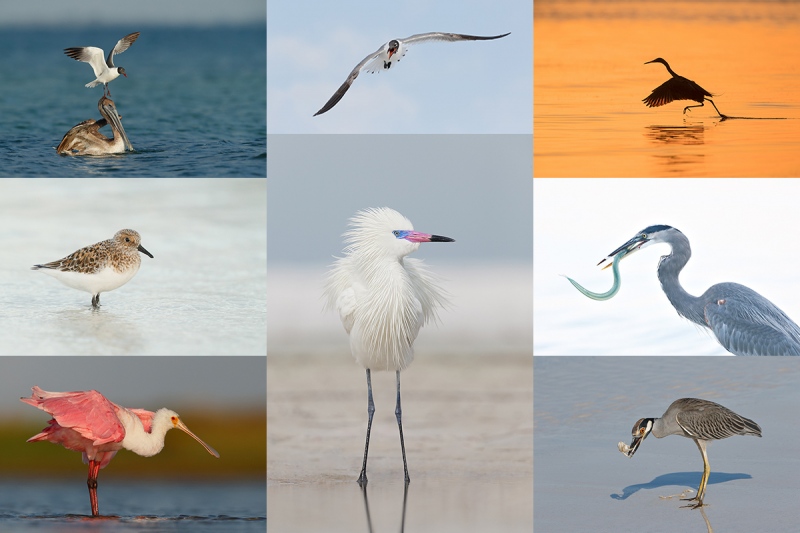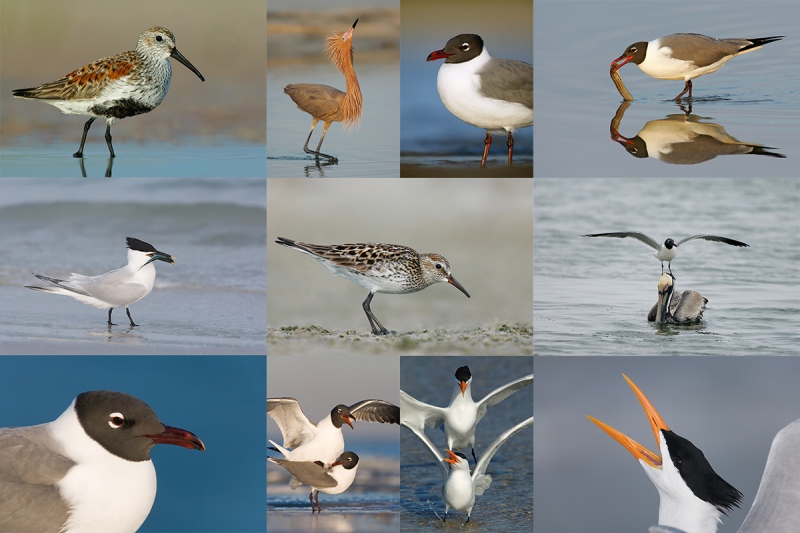April 4th, 2021 What’s Up?
Saturday morning turned out a lot better than the weather forecast. It dawned sunny with a good breeze from the north that turned northeast before swinging to the northwest at about 9am. I found the baby cranes foraging with and getting fed by the adults in the same spot they have been every morning since I found them. I photographed them for a bit and then got back in my SUV to go hunting. I was rewarded by finally getting some really good images of the single surviving colt. I worked from my vehicle with the hand held 200-600 and the a1.
With light clouds moving quickly and partially or fully blocking the sun at times, Zebras saved the say. Working with shutter speeds between 1/1000 and 1/1600 second and the aperture set at either f/6.3 (wide open) or at f/7.1 (stopped down 1/3-stop), the ISOs varied with almost every frame I kept ranging from ISO 500 with the sun fully out to ISO 1250 when the sun was totally obscured.
On the EVF-BO front, I am glad to report that the a1 has not blacked out in more than a week.
I got a ton of work done on the Zoom Webinar presentation I will be doing for the South Shore (Long Island, NY) Camera Club on April 7th. It is entitled Designing and creating pleasing and dramatic natural history images. I should have it pretty much completed by today but usually wind up changing around a slide or two ten minutes before the presentation.
Today is Sunday 4 April 2021. The forecast for ILE this morning is for partly cloudy skies with north/northeast winds at 10mph. I will head down to the lake early to see if I can locate the baby crane nest … Wherever you are and whatever you are doing, I hope that you have a great day.
This blog post took almost two hours to prepare and makes 103 consecutive days with a new one. Please remember to use my B&H affiliate links or to save money at Bedfords by using the BIRDSASART discount code at checkout. Doing either often earns you free guides or discounts. And doing so often earns my great appreciation.
|
|
The BIRDS AS ART Current Workflow e-Guide (Digital Basics II).
You can order your copy from the BAA Online Store here, by sending a PayPal for $40 here, or by calling Jim or Jennifer weekdays at 863-692-0906 with your credit card in hand. Be sure to specify Digital Basics II.
|
The BIRDS AS ART Current Workflow e-Guide (Digital Basics II)
The basics of grabbing a bird’s eye from one frame and using it in a second frame (as with Image #1A below), are detailed in the BIRDS AS ART Current Workflow e-Guide (Digital Basics II), an instructional PDF that is sent via e-mail. This guide also includes all of the clean-up techniques that I use on most every image that I create and tons more great Photoshop tips and techniques along with all of my personalized Keyboard Shortcuts — are covered in detail. (Note RAW conversions in Capture One RAW Conversions) are not covered in DB II. Learn more and check out the free excerpt in the blog post here. While the new e-Guide reflects my MacBook Pro/Photo Mechanic/DPP 4/Photoshop workflow, folks using a PC and/or BreezeBrowser will also benefit greatly by studying the material on DB II. Note: folks working on a PC and/or those who do not want to miss anything Photoshop, may wish to purchase the original Digital Basics along with DB II while saving $15 by clicking here to buy the DB Bundle.
Folks who learn well by following along rather than by reading can check out the complete collection of MP 4 Photoshop Tutorial Videos by clicking here. Note: all of the videos are now priced at an amazingly low $5.00 each.
You can learn how and why I converted all of my Canon digital RAW files in DPP 4 in the DPP 4 RAW Conversion Guide here. More recently, I became proficient at converting my Nikon RAW (NEF) files in Adobe Camera Raw. About two years ago I began converting my Nikon and Sony RAW files in Capture One Pro 12 and continue to do so today.
To purchase Capture One, please use this link. Then you can learn more about Capture One in the Capture One Pro 12 Simplified MP4 Video here. The next step would be to get a copy of Arash Hazeghi’s “The Nikon Photographers’ Guide to Phase One Capture One Pro e-Guide” in the blog post here.
You can learn advanced Quick Masking and advanced Layer Masking techniques in APTATS I & II. You can save $15 by purchasing the pair. Folks can learn sophisticated sharpening and (NeatImage) Noise Reduction techniques in The Professional Post Processing Guide by Arash Hazeghi and edited by yours truly. Please use this link to purchase NeatImage.
|
|
|
This image was created on 30 March 2021 at Stick Marsh, Fellsmere, FL. I used the hand held Sony FE 200-600mm f/5.6-6.3 G OSS lens (at 344mm) and The One, the Sony Alpha 1 Mirrorless digital camera. Auto ISO set 640. Exposure determined with Exposure Compensation on the Thumb Dial. Multi-metering +2.3 stops: 1/40 sec. at f/6.3 (wide open) in Shutter Priority (S) mode. AWB at 7:31am with clouds on the eastern horizon.
Wide/AF-C was active at the moment of exposure and performed perfectly.
Image #1: Roseate Spoonbill SQUARE landing blur
|
Yesterday …
In yesterday’s Three Squares a Day blog post here, many folks were partial to Image #1, the Roseate Spoonbill SQUARE landing blur. But nearly everyone wished that the eye (and the face?) were sharp or at least sharper …
Carol Nichols Comment: April 3, 2021 at 12:48pm
I also love the first image, but would prefer a sharp eye and bill. Would that even have been possible? If so, what could you have done to get that result? Thanks.
Arthur Morris/BIRDS AS ART Response: April 3, 2021 at 1:06pm
Good question, Carol. At times, when creating blurs of flying birds at shutter speeds between 1/30 and 1/125 second (or even as slow as 1/15 second), it is possible to get the face and eye sharp or even very sharp if you pan smoothly and your panning rate exactly matches the speed of the bird in flight and, if the birds head is not moving up or down. In other words, it ain’t easy. with love, a
ps: there are, of course, Photoshop option …
Carol Nichols Reply: April 3, 2021 at 1:11pm
Thanks for the explanation.
Arthur Morris/BIRDS AS ART Reply: April 3, 2021 at 1:36pm
YAW. And stay tuned for the ps: PS option. with love, a
|
|
|
This image was created on 30 March 2021 at Stick Marsh, Fellsmere, FL. I used the hand held Sony FE 200-600mm f/5.6-6.3 G OSS lens (at 344mm) and The One, the Sony Alpha 1 Mirrorless digital camera. Auto ISO set 640. Exposure determined with Exposure Compensation on the Thumb Dial. Multi-metering +2.3 stops: 1/40 sec. at f/6.3 (wide open) in Shutter Priority (S) mode. AWB at 7:31am with clouds on the eastern horizon.
Wide/AF-C was active at the moment of exposure and performed perfectly.
Click on the image to see a slightly larger, slightly sharper (?) version with the much sharper eye.
Image #1A: Roseate Spoonbill SQUARE landing blur with the eye replaced
|
Is This Any Better?
To create Image #1 A above, I grabbed the sharp eye from yesterday’s Image #3 via a Quick Mask, moved it into place with the Move Tool (V), and used the Transform command to warp, rotate, and re-size it. As it looked just a bit too sharp, I softened it a bit by applying a one pixel Gaussian Blur. I re-learned a long forgotten lesson: when working on tiny selections we need to use very low pixel values when applying a Gaussian blur. I typically use a 65 pixel Gaussian blur to soften problematic backgrounds.
Is this better or does it need the face (and bill) sharper too?
|
|
|
This image was created on 31 March 2021 at Indian Lake Estates. I used the hand held Sony FE 200-600mm f/5.6-6.3 G OSS lens (at 600mm) and The One, the Sony Alpha 1 Mirrorless digital camera. ISO 3200. Exposure determined with ISO on the Thumb Wheel. 1/1000 sec. at f/6.3 (wide open) in Manual mode. AWB at 7:40am on a clear morning.
Click on the image to enlarge it and see if you can figure out what bugs me …
Wide/AF-C was active at the moment of exposure and somewhat amazingly, performed perfectly.
Image #2: Sandhill Crane chicks — little chicks in a big world
|
The Full Frame Original
Little chicks in a big world was the consensus pick of the litter in the Little Chicks in a Big World, My Favorite Crane Chick Perspective, and Clambering Around at 1/1000 Second blog post here. I liked all three images equally.
I asked what bugged me about the image.
Kathy J Kunce Comment: April 2, 2021 at 11:53am
Head angle (of the left-hand bird) is a little off, and the head is a bit soft focus.
Arthur Morris/BIRDS AS ART Response: April 2, 2021 at 12:06pm
One out to two ain’t bad … with love, a
See my additional comments below.
|
|
|
Click on the image to see a larger version.
Wide/AF-C was active at the moment of exposure and somewhat amazingly, performed perfectly.
Image #2A: An unsharpened 96.5% crop of the Sandhill Crane chicks — little chicks in a big world image
|
What Bugged Me …
The only thing that bugged (and still bugs) me about this image is the head angle of the chick on our left. Close examination shows that it is pretty much perfectly parallel to the imaging sensor. But that is not good enough. As stated here often, the best head angle (for a side shot), has the bird’s head turned one to three degrees toward us. Let’s call it two degrees on average. For tight shots, this puts the bill tip on the same plane as the birds eye so that lack of depth-of-field is less of an issue. But more importantly, a slight head turn toward the viewer creates a connection between the subject and the viewer.
Note: Image 2A represents only 3.5% of the original pixels! How’s that for image quality?
Believe it or Not …
Believe it or not, as I framed up the image with the hand held 200-600 at 600mm, I was begging the left hand chick to turn its head just a bit toward me. After I made four quick images, I uttered a sharp kweek, kweek in hopes that the offending chick on my left would give me what I wanted. It did not work. The cute side-by-side pose had lasted only about four seconds. With most bird photography, it pays not to tarry. And that goes quadruple when trying to create nice juxtapositions invoking two live subjects!
The Lesson
Head angle matters even with tiny-in-the frame subjects.
|
|
|
Click on the image to see a larger version.
Wide/AF-C was active at the moment of exposure and somewhat amazingly, performed perfectly.
Image #2B: SONY a1 Animal Eye Face Tracking AF image
|
SONY a1 Animal Eye Face Tracking AF
In yesterday’s blog post, I mentioned that with Image #2, the AF system — for whatever reason — could simply not recognize and track the plainly visible eye of the handsome spoonbill. But I also mentioned that the performance of Animal Eye Face Tracking AF with the a1 was almost always superb.
With a relatively tiny-in-the-frame subject, the performance of Animal Eye Face Tracking AF with this image is nothing short of astounding. How in the world could the system detect and track the face and the eye of a tiny crane chick more than 100 feet away?
Sony Alpha a1 AF Magic …
The AF system of the a1 — set up as detailed in e-mails to the Sony Alpha a1 Info & Updates group, continues to amaze me. Early on there was lots of discussion within the group with many preferring multiple back button approaches. For me a simple shutter button approach with the right AF settings that yield 99% sharp on the eye images is best. By far. Super-simple and mega-effective. Note: info on the program that I use to ascertain SONY AF point information is detailed in one of the SONY Alpha a1 Set-up and Info Group e-mails. I plan on making that information available here soon for all SONY camera users.
SONY Alpha a1 Set-up and Info Group
The SONY Alpha a1 Set-up and Info Group is going great guns as folks chime in with thoughtful questions and experience-based advice. We are now up to 20 folks. Early on, we discussed the best AF options. More recently, we have been in contact with folks at SONY sharing our thoughts, experiences, and frustrations with the EVF blackout problem. There will be more on that topic here soon.
All who purchased their Alpha a1 bodies via a BAA affiliate link will receive a free subscription to the Sony Alpha a1 Set-Up and Info Updates after shooting me their receipts via e-mail. This same service may be purchased by anyone with an a1 body via a $150.00 Paypal sent to birdsasart@verizon.net indicating payment for Alpha a1 Info Updates. Alternatively, you can call Jim weekday afternoons at 1-863-692-0906 to pay via credit card. New members will receive composite e-mails summarizing all previous discussions.
Typos
With all blog posts, feel free to e-mail or to leave a comment regarding any typos or errors.
April 3rd, 2021 If …
If you feel strongly either way about any of today’s three featured square crops, please leave a comment letting us know how you feel and why.
What’s Up?
Rajat Kapoor from Kentucky, vacationing in Florida with his wife and younger son, joined me at Stick Marsh for an In-the-Field session on Friday. The forecast had been for northeast winds at about 10mph. Instead, a cold front had roared through overnight and we were greeted by 20mph northwest winds with gusts to 30. With clear skies. As I write here often, strong northwest winds on sunny morning are death on bird photography. It was brutal. I was glad that I had my parka and gloves in the car. We started with some nice pre-dawn palm tree silhouettes. Then, exactly zero spoonbills flew into the usual hotspot. We had about one hundred Cattle Egrets roosting on the North Rookery island. We did some wide stuff and talked a lot about exposure. After that, we got down on our butts at one point and got some nice head shots of Black Vultures with blue water backgrounds (and talked a lot about exposure). After that we moved around a lot without much success. We did have some flyby spoonies and Great Egrets (and talked a lot about exposure).
Rajat was amazingly nice and amazingly understanding. I am hoping that he can make it here early on Monday for a free make-up session with the crane chicks.
Here is what he had to say about our morning (via unsolicited e-mail):
Hi Artie, Thank you so much for taking the time today. I really enjoyed my time with you this morning and definitely learned so much. You were generous and helpful in offering me valuable advice. I could truly see your remarkable passion in spreading your vast knowledge so that everyone of us can benefit. I witnessed it personally today when I noticed you interacting with people you may not even know, but wanted to help them unselfishly to improve their skills. I also want to thank you for extending me the offer to come and join you for a session to photograph the Sandhill Crane chicks. As you know, our schedule is quite hectic — my son really wants to go see the Kennedy Space Center). I cannot promise for Saturday or Sunday, but Monday morning could be possible.
I really would love it too, if my wife and son could meet you as well. best regards Rajat.
The wind was strong from the northeast at 7pm last night, perfect for sunset silhouette photography. But I was so busy working on the webinar for the South Shore Camera Club that I totally missed sunset and headed to bed early.
Today is Saturday 3 April 2021. The forecast for ILE this morning is for partly cloudy with 10mph north winds. I will be headed down to the lake fairly early as it is generally calm for a while right around sunrise. Wherever you are and whatever you are doing, I hope that you have a great day.
This blog post took almost two hours to prepare and makes 102 consecutive days with a new one. Please remember to use my B&H affiliate links or to save money at Bedfords by using the BIRDSASART discount code at checkout. Doing either often earns you free guides or discounts. And doing so often earns my great appreciation.
|
|
|
This image was created on 30 March 2021 at Stick Marsh, Fellsmere, FL. I used the hand held Sony FE 200-600mm f/5.6-6.3 G OSS lens (at 344mm) and The One, the Sony Alpha 1 Mirrorless digital camera. Auto ISO set 640. Exposure determined by Zebras with Exposure Compensation on the Thumb Dial. Multi-metering +2.3 stops: 1/40 sec. at f/6.3 (wide open) in Shutter Priority (S) mode. AWB at 7:31am with clouds on the eastern horizon.
Wide/AF-C was active at the moment of exposure and performed perfectly.
Image #1: Roseate Spoonbill SQUARE landing blur
|
Three Squares a Day
As I have been doing intermittent fasting for the past two years, I eat only two meals a day. But three squares on a single day of photography has got to be a good thing! I am not sure why I have suddenly acquired a taste for 1:1 crops, but I think that the perfectly square crops work well with all three of today’s featured images. With this pleasing (for me at least) blur, the square crop was necessitated by my failure to pan fast enough to keep the bird back (to our left) in the frame.
Does this image need the face and eye to be sharp to be a success?
|
|
|
Click on the image to see the amazing job of noise reduction in the after image on our right.
Image #1A: Topaz DeNoise AI on the Roseate Spoonbill SQUARE landing blur image
|
Topaz DeNoise AI Rocks
Note the placement of the navigator box on the darkest mangroves in the upper right corner of the frame and the 400% Zoom (magnification). And be sure to click on the screen capture to see the amazing job of noise reduction in the after image on our right. With the last update, Topaz DeNoise AI got a lot faster. That is a big plus as I run it on almost every image I process as the first step in my workflow (immediately after bringing the converted TIF into Photoshop). If needed, I will execute a Delete Cropped Pixels crop before running DeNoise so that the program does not have to work quite as hard (or as long).
Great Topaz News!
Folks who use the BAA Topaz link to purchase Sharpen AI, DeNoise AI, or the Utility Bundle (or any other Topaz plug-ins), will receive a 15% discount by entering the ARTHUR15 code at checkout. If the stuff is on sale (as it usually is), you save 15% off of the sale price! To get the discount you must use my link and you must enter the discount code. Be sure to start with this link.
Those who purchase Sharpen AI, DeNoise AI, or any other Topaz plug-ins using my link and then entering the ARTHUR15 code at checkout can e-mail to request a short Getting Started with Topaz e-Guide. Please include a copy of your Topaz receipt that shows the discount. Aside from the basics, the guide explains how to install the plug-ins so that they appear in the Photoshop Filter Menu.
|
|
|
This image was created on 30 March 2021 at Stick Marsh, Fellsmere, FL. I used the hand held Sony FE 200-600mm f/5.6-6.3 G OSS lens (at 600mm) and The One, the Sony Alpha 1 Mirrorless digital camera. ISO 800. Exposure determined with ISO on the Thumb Wheel. 1/1000 sec. at f/6.3 (wide open) in Manual mode. AWB at 8:26am on a then clear morning.
Wide/AF-C was active at the moment of exposure and did not do such good (again quoting my late-Dad).
Image #2: Roseate Spoonbill SQUARE portrait
|
Depth of Field …
Like the Canon R5, there are times when the a1 fails to detect and track a very obvious to us bird’s eye. The AF system was convinced that the distal end of the bill was the spoonies eye. And would not let go even when I bumped the focus. I should have switched to ZONE AF and moved it to the upper right. But I did not want to lose the pose so I pushed the shutter button. Topaz Sharpen AI (surprisingly on Focus), did a nice job of sharpening the bird’s face and eye.
By comparing the EXIF for this image with the EXIF in Image #3, you will see that I properly reduced the shutter speed by half to save one full stop of ISO. As I was seated using the knee-pod technique (and thus quite stable), setting 1/500 sec. at f/9 would have been a better choice (especially if I had known that the AF problem would arise). Do understand, again, as with the Canon R5, that the a1’s eye-tracking AF is consistently amazing (though not 100% perfect).
Image Question
Would you have removed the liver spot (???) near the end of the bill? Why or why not?
|
|
|
This image was created on 30 March 2021 at Stick Marsh, Fellsmere, FL. I used the hand held Sony FE 200-600mm f/5.6-6.3 G OSS lens (at 243mm) and The One, the Sony Alpha 1 Mirrorless digital camera. ISO 640. Exposure determined with ISO on the Thumb Wheel. 1/2000 sec. at f/5.6 (wide open) in Manual mode. AWB at 8:30am on a then very slightly cloudy morning.
Wide/AF-C was active at the moment of exposure and performed perfectly.
Image #3: Roseate Spoonbill SQUARE braking to land orchestra conductor pose
|
200-600 G Lens Versatility
Note that with Image #3 I had zoomed out to 243mm. In retrospect, zooming out to 200mm would have been an even better choice. Compare that with 600mm focal length that worked perfectly for Image #2. I felt bad for Rajat that it was too cold and windy for the spoonbills to fly in to grab some sticks for the nest. The weather, however, is looking excellent for my two Stick Marsh days (this coming Tuesday and Wednesday) with the M&M boys. — Morris Herstein and Mike Gotthelf, both multiple IPT veterans. I am hoping that Rajat can make it here early on Monday.
The Stick Marsh Site Guide Subscription Service
The Site Guide Subscription Service is a new concept. I e-mailed the first issue last week: Stick Marsh Site Guide e-Mail #1: The Basics. The Basics e-mail includes specific directions to the site, and a map of the rookery area with specific instructions and wind, weather, and where-to-be advice. I e-mailed the second installment yesterday. In it, I shared several new shooting locations and strategies. I will be sending e-mail #3 this afternoon or tomorrow at the latest.
To sign up for the Stick Marsh Site Guide Subscription Service, call Jim in the office weekday afternoons at 863-692-0906 with your credit card in hand or send a PayPal for the $100.00 to us at birdsasart@verizon.net. Please be sure to include the words Stick Marsh with your Paypal. At some point, we will get this item in the BAA Online Store.
I fully understand that you can go to Google Maps, find the Stick Marsh, visit, and likely make some good or great images. You might think, I can do fine just without artie’s advice. But you will do a whole lot better with it.
Typos
With all blog posts, feel free to e-mail or to leave a comment regarding any typos or errors.
April 2nd, 2021 The Best Image?
Of today’s three featured images, which do you think is the best one? All are invited to leave a comment sharing their choice and the reasons they made it. And while you are at it, let me know what bugs me about Image #1.
What’s Up?
I hope that everyone had a fun April Fools Day yesterday. While many were expecting yet another April Fools Day joke from me — it has been a long-standing tradition — many fell victim to my shenanigans. I got more than two dozen congratulatory e-mails. And two folks kindly offered to purchase my Sony Alpha a1. One suggested that I send him all of my SONY gear since I didn’t need it any more. Note that the two previous blog posts laid the groundwork for my deception.
Kudos to Brian Small, the only one who noted that Isoroku Yamamoto was a Japanese Marshal Admiral of the Imperial Japanese Navy (IJN) and the commander-in-chief of their Combined Fleet during World War II; he was the guy who (fortunately) botched the Battle of Midway that turned the tide of the war in the Pacific.
I sold my Canon 100-500 and have a buyer for EOS R5. For me, the decision to go all in on SONY was an easy one. I have more confidence with the SONY gear for flight photography than I did with the Canon gear. I routinely make sharp images at 1200mm, even of birds in flight. And yes, the Zebra technology makes getting the right exposure as close to child’s play as possible. I will miss creating in-camera Multiple Exposures and flight HDRs, and I will miss the light weight, the four-foot MFD at 500mm, and the hand hold-ability of the RF 100-500. But working with two systems causes huge amounts of brain strain and in addition, I found myself missing some shots because of a moment of two-system confusion …
In the long run, it is all about the process and the images. I chuckle when I hear comments like this: “I used to follow artie’s blog until he switched to ______. You can fill in the blank.
I enjoyed yet another fantastic morning with the Sandhill Crane chicks on Thursday. They have consistently been foraging in the same area every morning. The weatherman must have been on crack as the weather was gorgeous with no thunderstorms in sight, scattered or otherwise. If you would like to join me for a morning of In-the-Field Instruction here at ILE on Saturday, Sunday, and/or Monday, please shoot me an e-mail or text or try me on my call at 863-221-2372. Lodging in the guest room gallery is available.
Today is Friday 2 April 2021. I will be meeting another first-timer, Rajat Kapoor, at Stick Marsh at 6:45am. His Nikon D850/200-500 rig should be perfect for the spoonbills. The forecast for Fellsmere is for sunny turning partly cloudy. The forecast for northeast winds changed to northwest. Though I have never photographed at this site with a northwest wind, I suspect that we will do well with the incoming spoonbills in flight. I will be sending out the third Stick Marsh Site Guide Subscription Service e-mail tomorrow sharing what I have learned on my last two visits. Wherever you are and whatever you are doing, I hope that you have a great day.
This blog post took almost two hours to prepare and makes 101 consecutive days with a new one. Please remember to use my B&H affiliate links or to save money at Bedfords by using the BIRDSASART discount code at checkout. Doing either often earns you free guides or discounts. And doing so often earns my great appreciation.
Please Remember
With income from IPTs now at zero, please, if you enjoy and learn from the blog, remember to use one of my two affiliate programs when purchasing new gear. Doing so just might make it possible for me to avoid having to try to get a job as a Walmart greeter and will not cost you a single penny more. And if you use Bedfords and remember to enter the BIRDSASART code at checkout, you will save 3% on every order and enjoy free second-day air shipping. In these crazy times — I am out at least forty to sixty thousand dollars so far due to COVID 19 (with lots more to come) — remembering to use my B&H link or to shop at Bedfords will help me out a ton and be greatly appreciated. Overseas folks who cannot order from the US because of import fees, duties, and taxes, are invited to help out by clicking here to leave a blog thank you gift if they see fit.
New and Better Bedfords Discount Policy!
You can now save 3% on all of your Bedfords photo gear purchases by entering the BIRDSASART coupon code at checkout. Your discount will be applied to your pre-tax total. In addition, by using the code you will get 2nd day air shipping via Fed Ex.
Grab a Nikon AF-S Teleconverter TC-14E III and save $14.99. Purchase a Canon EOS R5 and your discount will be $116.97. Purchase a Sony FE 600mm f/4 GM OSS lens and save a remarkable $389.94! Your Bedford’s purchase no longer needs to be greater than $1,000.00 for you to receive a discount. The more you spend, the more you save.
Money Saving Reminder
Many have learned that if you need a hot photo item that is out of stock at B&H and would enjoy free second-day air shipping, your best bet is to click here, place an order with Bedfords, and enter the coupon code BIRDSASART at checkout. If an item is out of stock, contact Steve Elkins via e-mail or on his cell phone at (479) 381-2592 (Central time). Be sure to mention the BIRDSASART coupon code and use it for your online order to save 3% and enjoy free 2nd-day air shipping. Steve has been great at getting folks the hot items that are out of stock at B&H and everywhere else. The wait lists at the big stores can be a year or longer for the hard to get items. Steve will surely get you your gear long before that. For the past year, he has been helping BAA Blog folks get their hands on items like the SONY a9 ii, the SONY 200-600 G OSS lens, the Canon EOS R5, the Canon RF 100-500mm lens, and the Nikon 500mm PF. Steve is personable, helpful, and eager to please.


Gear Questions and Advice
Too many folks attending BAA IPTs (remember those?), and dozens of photographers whom I see in the field and on BPN, are–out of ignorance–using the wrong gear especially when it comes to tripods and more especially, tripod heads… Please know that I am always glad to answer your gear questions via e-mail. Those questions might deal with systems, camera bodies, accessories, and/or lens choices and decisions.
|
|
|
This image was created on 31 March 2021 at Indian Lake Estates. I used the hand held Sony FE 200-600mm f/5.6-6.3 G OSS lens (at 600mm) and The One, the Sony Alpha 1 Mirrorless digital camera. ISO 3200. Exposure determined with ISO on the Thumb Wheel. 1/1000 sec. at f/6.3 (wide open) in Manual mode. AWB at 7:40am on a clear morning.
Click on the image to enlarge it and see if you can figure out what bugs me …
Wide/AF-C was active at the moment of exposure and somewhat amazingly, performed perfectly.
Image #1: Sandhill Crane chicks — little chicks in a big world
|
Little Chicks in a Big World
Early on, both chicks wandered far from their parents and hung out in the center of the peninsula. I saw the opportunity to create an image with a definite message. The contrast in subject size in today’s featured images is intriguing … I was quite impressed that the AF system grabbed the face of the bird on our left. That brings us to:
What Bugs Me About This Image?
Something about this image bugged me. I saw it through the viewfinder and prayed, but my prayers were not answered. If you think that you know what it is that bothers me about this otherwise very fine image, please leave a comment.
|
|
|
This image was created on 31 March 2021 at Indian Lake Estates. I used the hand held Sony FE 200-600mm f/5.6-6.3 G OSS lens (at 600mm) and The One, the Sony Alpha 1 Mirrorless digital camera. ISO 1600. Exposure determined with ISO on the Thumb Wheel. 1/1000 sec. at f/6.3 (wide open) in Manual mode. AWB at 7:53am on a clear morning.
Wide/AF-C was active at the moment of exposure and performed perfectly. Click on the image to enjoy a larger version.
Image #2: Sandhill Crane chicks — striding along the crest or the slope
|
My Favorite Perspective
Images like this, with the chicks at the top of the slope, show my favorite perspective: low enough to eliminate the lake, the far shoreline of the lake, and the sky from the background, while being low enough to make it seem that I was lying flat on the ground with that creamy, dreamy background. The fact that the chicks at a bit more than a week old are mega-cute does not hurt the resulting images! This one was headed for food but not running or flapping its wing stubs.
|
|
|
This image was created on 31 March 2021 at Indian Lake Estates. I used the hand held Sony FE 100-400mm f/4.5-5.6 GM OSS Lens (at 400mm) and The One, the Sony Alpha 1 Mirrorless digital camera. ISO 1600. Exposure determined with ISO on the Thumb Wheel. 1/800 sec. at f/6.3 (stopped down 1/3-stop) in Manual mode. AWB at 8:12am on a clear morning.
Wide/AF-C was active at the moment of exposure and performed perfectly. Click on the image to enjoy a larger version.
Image #3: Sandhill Crane chick — 100-400mm head portrait
|
Clambering Around at 1/1000 Second
Folks might ask, “Why 1/1000 sec. for a static image like this?” Especially in light of the a1’s fabulous IBIS (in-body-image-stabilization) and the great OSS system in the 200-600 G lens? There are two reasons:
- 1- When doing the baby cranes very recently, I am working on a slope that leads down to a canal. The ground is very uneven. It is difficult to stay balanced. Heck, yesterday I almost fell backwards into the water! I am moving left and right to follow the foraging family of four while staying roughly on sun angle. And I am moving up and down to control the perspective. The latter is why many of the image look as if I am either sitting or lying down on the ground. Anyhoo, things are quite unstable.
- 2- The winning shot here — I am still trying for it with the new chicks, is the one when one of the little ones runs toward one of the parents at high speed to grab a succulent bug — mole crickets are their favorites, flapping their tiny wing buds as they go.
The bottom line is that working with a lower ISO at 1/500 second just does not produce consistently sharp images.
The Lesson
It is always better to sacrifice ISO to ensure a fast enough shutter speed that will enable you to create consistently sharp images. After two decades of digital photography, I still struggle at times to implement this strategy …
Sony Alpha a1 AF Magic …
The AF system of the a1 — set up as detailed in e-mails to the Sony Alpha a1 Info & Updates group, continues to amaze me. Early on there was lots of discussion within the group with many preferring multiple back button approaches. For me a simple shutter button approach with the right AF settings that yield 99% sharp on the eye images is best. By far. Super-simple and mega-effective. Note: info on the program that I use to ascertain SONY AF point information is detailed in one of the SONY Alpha a1 Set-up and Info Group e-mails. I plan on making that information available here soon for all SONY camera users.
SONY Alpha a1 Set-up and Info Group
The SONY Alpha a1 Set-up and Info Group is going great guns as folks chime in with thoughtful questions and experience-based advice. We are now up to 19 folks. Early on (as noted above) we discussed the best AF options. More recently, we have been in contact with folks at SONY sharing our thoughts, experiences, and frustrations with the EVF blackout problem. There will be more on that topic here tomorrow.
All who purchased their Alpha a1 bodies via a BAA affiliate link will receive a free subscription to the Sony Alpha a1 Set-Up and Info Updates after shooting me their receipts via e-mail. This same service may be purchased by anyone with an a1 body via a $150.00 PayPal sent to birdsasart@verizon.net indicating payment for Alpha a1 Info Updates. Alternatively, they can call Jim weekday afternoons at 1-863-692-0906 to pay via credit card. New members will receive composite e-mails that summarize all previous discussions.
|
|
|
All of the images were created at Fort DeSoto in April or early May. Click on the card to enjoy a larger version.
Fort DeSoto IPT card A
|
Fort DeSoto Spring IPT #1
Fort DeSoto Spring IPT #1. 3 1/2 DAYS. SAT 10 APR thru the morning session on TUES 13 APR 2021. $1499 includes three lunches. Limit: 6. Openings: 5.
While DeSoto is one of the rare photo hotspots with the potential to be great any day of the year, it absolutely shines in spring. Many of the wading birds and shorebirds are in full breeding plumage. The terns and gulls are courting and copulating. We will have lots of flight photography opportunities. Did I mention that many of the birds are silly tame?
A $499 deposit is required to hold your spot for this IPT. You can send a check (made out to “BIRDS AS ART) to us here: BIRDS AS ART, PO Box 7245, Indian Lake Estates, FL, 33855, or call Jim or Jennifer at the office with a credit card at 863-692-0906. Your balance, payable only by check, is due immediately after you sign up. If you have any questions, please feel free to contact me via e-mail. If you cancel due to COVID 19 concerns, all of your payments will be refunded.
|
|
|
All of the images were created at Fort DeSoto in April or early May. Click on the card to enjoy a larger version.
Fort DeSoto IPT card B
|
Fort DeSoto Spring IPT #2
Fort DeSoto Spring IPT #2. 3 1/2 DAYS. MON 26 APR thru the morning session on THURS 29 APR 2021. $1499 includes three lunches. Limit: 6. Openings: 5.
Not only am I conversant in all three major camera systems used in the US — Nikon, Canon, and SONY (sorry Andy Rouse …), I have used all three within the past four years. Those include both SONY and Canon mirrorless. On both of these IPTs you will learn how to get the best exposure, how to get the most out of your AF system, and how to get close to free and wild birds. And tons more.
A $499 deposit is required to hold your spot for this IPT. You can send a check (made out to “BIRDS AS ART) to us here: BIRDS AS ART, PO Box 7245, Indian Lake Estates, FL, 33855, or call Jim or Jennifer at the office with a credit card at 863-692-0906. Your balance, payable only by check, is due immediately after you sign up. If you have any questions, please feel free to contact me via e-mail. If you cancel due to COVID 19 concerns, all of your payments will be refunded.
|
|
|
All of the images were created at Fort DeSoto in April or early May. Click on the card to enjoy a larger version.
Fort DeSoto IPT card C
|
Fort DeSoto Spring IPTs Expected Species
With any luck, we should get to photograph the following species: Laughing, Ring-billed, Herring, and Lesser Black-backed Gull; Royal, Sandwich, and Forster’s Tern: Great, Snowy, and white and dark morph Reddish Egret and Great Blue, Little Blue, and Tricolored Heron; Yellow-crowned Night-Heron, Wood Stork, Roseate Spoonbill, and Brown Pelican. We will see and photograph lots of shorebirds including American Oystercatcher, Black-bellied, Wilson’s, Semipalmated, Snowy, and Piping Plover, Marbled Godwit, Willet, Dunlin, Red Knot, Sanderling, and Western and possibly White-rumped Sandpiper.
Sign up for both IPTs and enjoy a $200 discount. Most of us will be staying in nearby Gulfport.
Typos
With all blog posts, feel free to e-mail or to leave a comment regarding any typos or errors.
|
|



